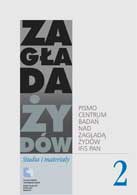Menu
- Main Page
- About us
- Research
- Publications
- Links
- Contact
- Archiwum
- Holocaust. Studies and Materials
the Center's Journal - NIGHT WITHOUT AND END - »FAILED CORRECTION«
- Wybór źródeł
- EHRI PL
News
Programme of Center's academic seminars for winter term 2025
We are pleased to announce the return of our scientific seminar series in less than a month, and warmly invite all interested parties to attend. The seminars will be held on the second or third Wednesday of each month, both in person at the Institute of Philosophy and Sociology of the Polis...
M. Turski Historical Award of Polityka for Justyna Majewska
It is with undisguised pride we report that our colleague Dr. Justyna Majewska has been awarded the Marian Turski POLITYKA Historical Prize for her book debut, "Mury i szczeliny. Przestrzenie getta warszawskiego /Walls and Slits. Spaces of the Warsaw Ghetto". We are very happy and...
Call for Articles - Holocaust Studies and Materials 2026
Call for Articles 2026 Call for Articles Connecting scholarly reflection on the Holocaust to the present - new sources and technologies in research The past decade has seen a breakthrough in Holocaust research, both in terms of the availability of archival sources and the digital ...
Farewell to Marian Turski
It is with profound sorrow that we bid farewell to Marian Turski—a distinguished journalist, historian, and Survivor. An extraordinary man whose voice resonated deeply, he not only shared the lessons of the past but actively championed courage, solidarity, and empathy in the face of evil. ...
Center in EHRI PL consortium
Polish Center for Holocaust Research of the Institute of Philosophy and Sociology of the Polish Academy of Sciences, together with the E. Ringelblum Jewish Historical Institute and the Center for Jewish Studies of the University of Lodz, are creating a national node of the European Holocaust Research Infrastructure within the framework of ERIC
NEWSLETTER
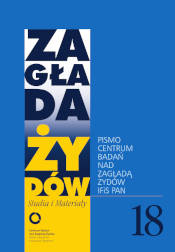 Zagłada Żydów.
Zagłada Żydów.
Studia i Materiały
nr 18, R. 2022
Warszawa 2022
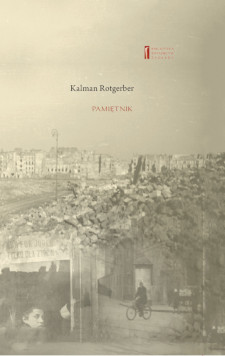 PAMIĘTNIK
PAMIĘTNIK
Kalman Rotgeber
oprac. Aleksandra Bańkowska, wstęp Jacek Leociak
Warszawa 2021
Zagłada Żydów.
Studia i Materiały
nr 17, R. 2021
Warszawa 2021
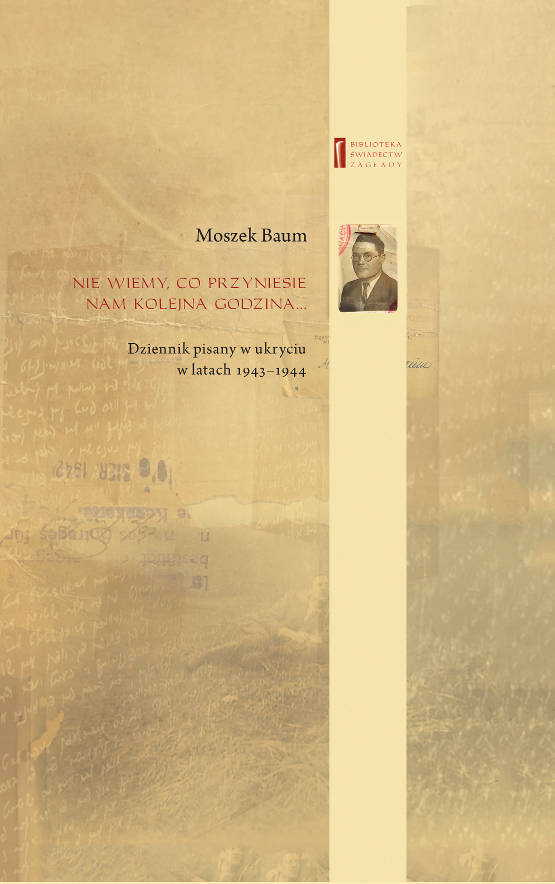 NIE WIEMY CO PRZYNIESIE NAM KOLEJNA GODZINA ...
NIE WIEMY CO PRZYNIESIE NAM KOLEJNA GODZINA ...
Dziennik pisany w ukryciu w latach 1943-1944
Moszek Baum, oprac. Barbara Engelking, tłum. z jidysz Monika Polit
Warszawa 2020
Zagłada Żydów.
Studia i Materiały
nr 16, R. 2020
Warszawa 2020
.jpg) Aryjskiego Żyda wspomnienia, łzy i myśli
Aryjskiego Żyda wspomnienia, łzy i myśli
Zapiski z okupacyjnej Warszawy
Sewek Okonowski, oprac. Marta Janczewska
 PISZĄCY TE SŁOWA JEST PRACOWNIKIEM
PISZĄCY TE SŁOWA JEST PRACOWNIKIEM
GETTOWEJ INSTYTUCJI ...
'z Dziennika' i inne pisma z łódzkiego getta
Józef Zelkowicz, tłum. z jidysz, oprac. i wstęp. Monika Polit
Warszawa 2019
CZYTAJĄC GAZETĘ NIEMIECKĄ ...
Dziennik pisany w ukryciu w Warszawie w latach 1943-1944
Jakub Hochberg, oprac. i wstępem opatrzyła Barbara Engelking
Warszawa 2019
Zagłada Żydów.
Studia i Materiały
nr 15, R. 2019
Warszawa 2019
.jpg) Zagłada Żydów.
Zagłada Żydów.
Studia i Materiały
nr 14, R. 2018
Warszawa 2018
 DALEJ JEST NOC. Losy Żydów w wybranych powiatach okupowanej Polski
DALEJ JEST NOC. Losy Żydów w wybranych powiatach okupowanej Polski
red. i wstęp Barbara Engelking, Jan Grabowski
Warszawa 2018
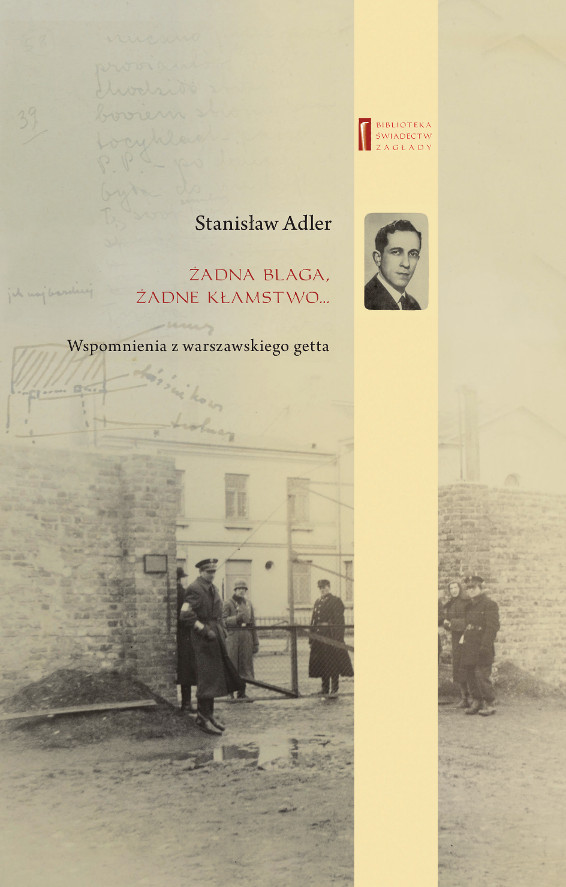 ŻADNA BLAGA, ŻADNE KŁAMSTWO ...
ŻADNA BLAGA, ŻADNE KŁAMSTWO ...
Wspomnienia z warszawskiego getta
Stanisław Adler, oprac. i wstępem opatrzyła Marta Janczewska
Warszawa 2018
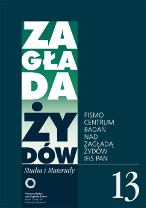 Zagłada Żydów.
Zagłada Żydów.
Studia i Materiały
nr 13, R. 2017
Warszawa 2017
 TYLEŚMY JUŻ PRZESZLI ...
TYLEŚMY JUŻ PRZESZLI ...
Dziennik pisany w bunkrze (Żółkiew 1942-1944)
Clara Kramer, oprac. i wstępem opatrzyła Anna Wylegała
Warszawa 2017
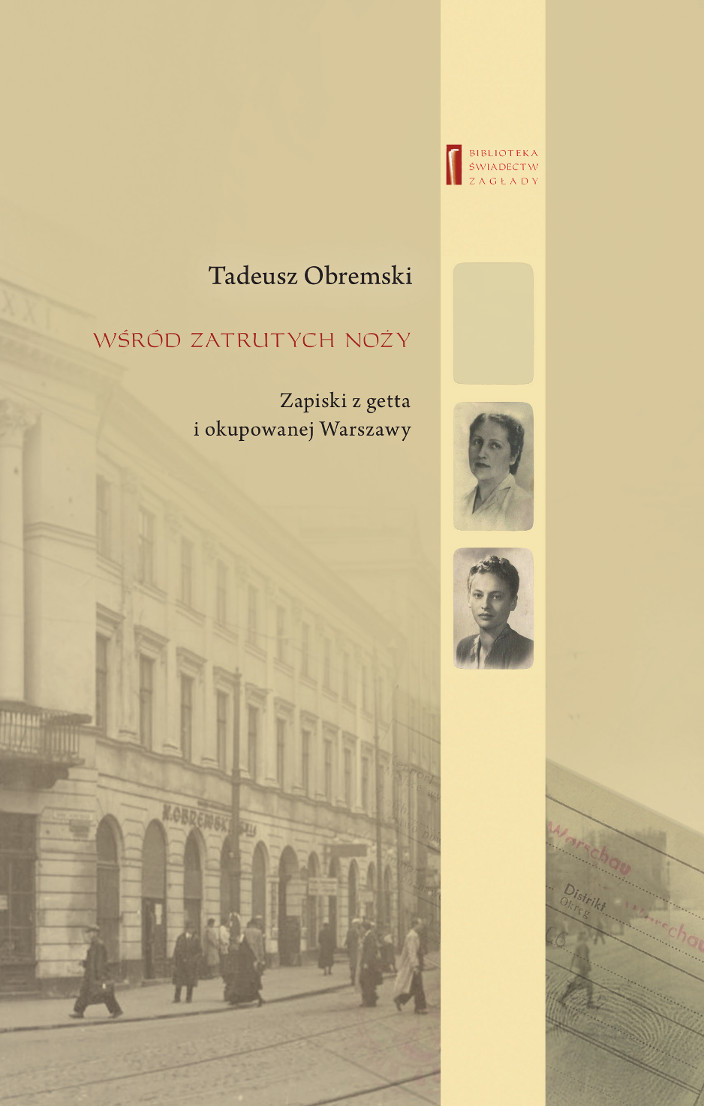 WŚRÓD ZATRUTYCH NOŻY ...
WŚRÓD ZATRUTYCH NOŻY ...
Zapiski z getta i okupowanej Warszawy
Tadeusz Obremski, oprac. i wstępem opatrzyła Agnieszka Haska
Warszawa 2017
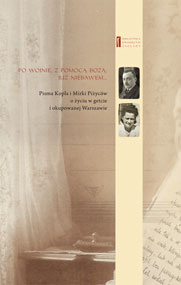 PO WOJNIE, Z POMOCĄ BOŻĄ, JUŻ NIEBAWEM ...
PO WOJNIE, Z POMOCĄ BOŻĄ, JUŻ NIEBAWEM ...
Pisma Kopla i Mirki Piżyców o życiu w getcie i okupowanej Warszawie
oprac. i wstępem opatrzyła Barbara Engelking i Havi Dreifuss
Warszawa 2017
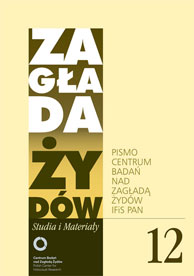 Zagłada Żydów.
Zagłada Żydów.
Studia i Materiały
nr 12, R. 2016
Warszawa 2016
.jpg) SNY CHOCIAŻ MAMY WSPANIAŁE ...
SNY CHOCIAŻ MAMY WSPANIAŁE ...
Okupacyjne dzienniki Żydów z okolic Mińska Mazowieckiego
oprac. i wstępem opatrzyła Barbara Engelking
Warszawa 2016
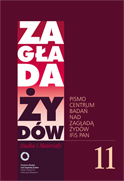 Zagłada Żydów.
Zagłada Żydów.
Studia i Materiały
nr 11, R. 2015
Warszawa 2015
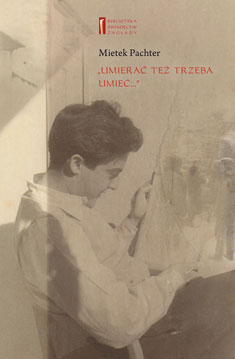 Mietek Pachter
Mietek Pachter
UMIERAĆ TEŻ TRZEBA UMIEĆ ...
oprac. B. Engelking
Warszawa 2015
 Zagłada Żydów.
Zagłada Żydów.
Studia i Materiały
nr 10, t. I-II, R. 2014
Warszawa 2015
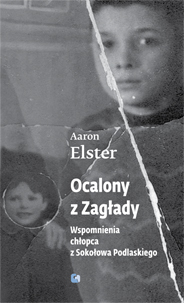 OCALONY Z ZAGŁADY
OCALONY Z ZAGŁADY
Wspomnienia chłopca z Sokołowa Podlaskiego
tłum. Elżbieta Olender-Dmowska
red .B. Engelking i J. Grabowski
Warszawa 2014
 ZAGŁADA ŻYDÓW. STUDIA I MATERIAŁY
ZAGŁADA ŻYDÓW. STUDIA I MATERIAŁY
vol. 9 R. 2013
Pismo Centrum Badań nad Zagładą Żydów IFiS PAN
Warszawa 2013
 ... TĘSKNOTA NACHODZI NAS JAK CIĘŻKA CHOROBA ...
... TĘSKNOTA NACHODZI NAS JAK CIĘŻKA CHOROBA ...
Korespondencja wojenna rodziny Finkelsztejnów, 1939-1941
oprac. i wstępem opatrzyła Ewa Koźmińska-Frejlak
Warszawa 2012
Raul Hilberg
PAMIĘĆ I POLITYKA. Droga historyka Zagłady
tłum. Jerzy Giebułtowski
Warszawa 2012
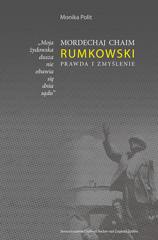 Monika Polit
Monika Polit
"Moja żydowska dusza nie obawia się dnia sądu."
Mordechaj Chaim Rumkowski. Prawda i zmyślenie
Warszawa 2012
.jpg) Dariusz Libionka i Laurence Weinbaum
Dariusz Libionka i Laurence Weinbaum
Bohaterowie, hochsztaplerzy, opisywacze. Wokół Żydowskiego Związku Wojskowego
Warszawa 2011
.jpg) Zagłada Żydów.
Zagłada Żydów.
Studia i Materiały
R. 2011, nr. 7; Warszawa 2011
.jpg) Jan Grabowski
Jan Grabowski
JUDENJAGD. Polowanie na Żydów 1942.1945.
Studium dziejów pewnego powiatu
Warszawa 2011
.jpg) Stanisław Gombiński (Jan Mawult)
Stanisław Gombiński (Jan Mawult)
Wspomnienia policjanta z warszawskiego getta
oprac. i wstęp Marta Janczewska
Warszawa 2010
Holocaust Studies and Materials
Journal of the Polish Center for Holocaust Research
Warssaw 2010
.jpg) Żydów łamiących prawo należy karać śmiercią!
Żydów łamiących prawo należy karać śmiercią!
"Przestępczość" Żydów w Warszawie, 1939-1942
B. Engelking, J. Grabowski
Warszawa 2010
Zagłada Żydów.
Studia i Materiały
R. 2010, nr. 6; Warszawa 2010
Wybór źródeł do nauczania o zagładzie Żydów
Ćwiczenia ze źródłami
red. A. Skibińska, R. Szuchta
Warszawa 2010
.jpg) W Imię Boże!
W Imię Boże!
Cecylia Gruft
oprac. i wstęp Łukasz Biedka
Warszawa 2009
Zagłada Żydów.
Studia i Materiały
R. 2009, nr. 5; Warszawa 2009
.jpg) Żydzi w powstańczej Warszawie
Żydzi w powstańczej Warszawie
Barbara Engelking i Dariusz Libionka
Warszawa 2009
 Reportaże z warszawskiego getta
Reportaże z warszawskiego getta
Perec Opoczyński
Warszawa 2009
 Notatnik
Notatnik
Szmul Rozensztajn
Warszawa 2008
.jpg) Holocaust
Holocaust
Studies and Materials.
English edition
2008, vol. 1; Warsaw 2008
.jpg) Źródła do badań nad zagładą Żydów na okupowanych ziemiach polskich
Źródła do badań nad zagładą Żydów na okupowanych ziemiach polskich
Przewodnik archiwalno-bibliograficzny
Alina Skibińska, wsp. Marta Janczewska, Dariusz Libionka, Witold Mędykowski, Jacek Andrzej Młynarczyk, Jakub Petelewicz, Monika Polit
Warszawa 2007
Zagłada Żydów. Studia i Materiały
R. 2007, nr. 3; Warszawa 2007
Prowincja noc.
Życie i zagłada Żydów w dystrykcie warszawskim
Warszawa 2007
.jpg) Utajone miasto.
Utajone miasto.
Żydzi po 'aryjskiej' stronie Warszawy [1941-1944]
Gunnar S Paulsson
Kraków 2007
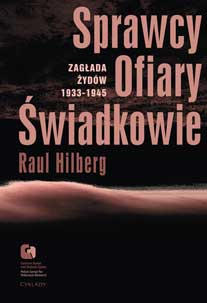 Sprawcy, Ofiary, Świadkowie.
Sprawcy, Ofiary, Świadkowie.
Zagłada Żydów, 1933-1944
Raul Hilberg
Warszawa 2007
Zagłada Żydów. Studia i Materiały
R. 2006, nr. 2; Warszawa 2006
"Jestem Żydem, chcę wejść!".
Hotel Polski w Warszawie, 1943.
Agnieszka Haska
Warszawa 2006
Zagłada Żydów. Studia i Materiały
R. 2005, nr. 1; Warszawa 2005
.jpg) 'Ja tego Żyda znam!'
'Ja tego Żyda znam!'
Szantażowanie Żydów w Warszawie, 1939-1943.
Jan Grabowski
Warszawa 2004
 'Szanowny panie Gistapo!'
'Szanowny panie Gistapo!'
Donosy do władz niemieckich w Warszawie i okolichach, 1940-1941
Barbara Engelking, Warszawa 2003
aaa
 Zagłada Żydów.
Zagłada Żydów.
Studia i Materiały
nr 18, R. 2022
Warszawa 2022
 PAMIĘTNIK
PAMIĘTNIK
Kalman Rotgeber
oprac. Aleksandra Bańkowska, wstęp Jacek Leociak
Warszawa 2021
Zagłada Żydów.
Studia i Materiały
nr 17, R. 2021
Warszawa 2021
 NIE WIEMY CO PRZYNIESIE NAM KOLEJNA GODZINA ...
NIE WIEMY CO PRZYNIESIE NAM KOLEJNA GODZINA ...
Dziennik pisany w ukryciu w latach 1943-1944
Moszek Baum, oprac. Barbara Engelking, tłum. z jidysz Monika Polit
Warszawa 2020
Zagłada Żydów.
Studia i Materiały
nr 16, R. 2020
Warszawa 2020
.jpg) Aryjskiego Żyda wspomnienia, łzy i myśli
Aryjskiego Żyda wspomnienia, łzy i myśli
Zapiski z okupacyjnej Warszawy
Sewek Okonowski, oprac. Marta Janczewska
 PISZĄCY TE SŁOWA JEST PRACOWNIKIEM
PISZĄCY TE SŁOWA JEST PRACOWNIKIEM
GETTOWEJ INSTYTUCJI ...
'z Dziennika' i inne pisma z łódzkiego getta
Józef Zelkowicz, tłum. z jidysz, oprac. i wstęp. Monika Polit
Warszawa 2019
CZYTAJĄC GAZETĘ NIEMIECKĄ ...
Dziennik pisany w ukryciu w Warszawie w latach 1943-1944
Jakub Hochberg, oprac. i wstępem opatrzyła Barbara Engelking
Warszawa 2019
Zagłada Żydów.
Studia i Materiały
nr 15, R. 2019
Warszawa 2019
.jpg) Zagłada Żydów.
Zagłada Żydów.
Studia i Materiały
nr 14, R. 2018
Warszawa 2018
 DALEJ JEST NOC. Losy Żydów w wybranych powiatach okupowanej Polski
DALEJ JEST NOC. Losy Żydów w wybranych powiatach okupowanej Polski
red. i wstęp Barbara Engelking, Jan Grabowski
Warszawa 2018
 ŻADNA BLAGA, ŻADNE KŁAMSTWO ...
ŻADNA BLAGA, ŻADNE KŁAMSTWO ...
Wspomnienia z warszawskiego getta
Stanisław Adler, oprac. i wstępem opatrzyła Marta Janczewska
Warszawa 2018
 Zagłada Żydów.
Zagłada Żydów.
Studia i Materiały
nr 13, R. 2017
Warszawa 2017
 TYLEŚMY JUŻ PRZESZLI ...
TYLEŚMY JUŻ PRZESZLI ...
Dziennik pisany w bunkrze (Żółkiew 1942-1944)
Clara Kramer, oprac. i wstępem opatrzyła Anna Wylegała
Warszawa 2017
 WŚRÓD ZATRUTYCH NOŻY ...
WŚRÓD ZATRUTYCH NOŻY ...
Zapiski z getta i okupowanej Warszawy
Tadeusz Obremski, oprac. i wstępem opatrzyła Agnieszka Haska
Warszawa 2017
 PO WOJNIE, Z POMOCĄ BOŻĄ, JUŻ NIEBAWEM ...
PO WOJNIE, Z POMOCĄ BOŻĄ, JUŻ NIEBAWEM ...
Pisma Kopla i Mirki Piżyców o życiu w getcie i okupowanej Warszawie
oprac. i wstępem opatrzyła Barbara Engelking i Havi Dreifuss
Warszawa 2017
 Zagłada Żydów.
Zagłada Żydów.
Studia i Materiały
nr 12, R. 2016
Warszawa 2016
.jpg) SNY CHOCIAŻ MAMY WSPANIAŁE ...
SNY CHOCIAŻ MAMY WSPANIAŁE ...
Okupacyjne dzienniki Żydów z okolic Mińska Mazowieckiego
oprac. i wstępem opatrzyła Barbara Engelking
Warszawa 2016
 Zagłada Żydów.
Zagłada Żydów.
Studia i Materiały
nr 11, R. 2015
Warszawa 2015
 Mietek Pachter
Mietek Pachter
UMIERAĆ TEŻ TRZEBA UMIEĆ ...
oprac. B. Engelking
Warszawa 2015
 Zagłada Żydów.
Zagłada Żydów.
Studia i Materiały
nr 10, t. I-II, R. 2014
Warszawa 2015
 OCALONY Z ZAGŁADY
OCALONY Z ZAGŁADY
Wspomnienia chłopca z Sokołowa Podlaskiego
tłum. Elżbieta Olender-Dmowska
red .B. Engelking i J. Grabowski
Warszawa 2014
 ZAGŁADA ŻYDÓW. STUDIA I MATERIAŁY
ZAGŁADA ŻYDÓW. STUDIA I MATERIAŁY
vol. 9 R. 2013
Pismo Centrum Badań nad Zagładą Żydów IFiS PAN
Warszawa 2013
 ... TĘSKNOTA NACHODZI NAS JAK CIĘŻKA CHOROBA ...
... TĘSKNOTA NACHODZI NAS JAK CIĘŻKA CHOROBA ...
Korespondencja wojenna rodziny Finkelsztejnów, 1939-1941
oprac. i wstępem opatrzyła Ewa Koźmińska-Frejlak
Warszawa 2012
Raul Hilberg
PAMIĘĆ I POLITYKA. Droga historyka Zagłady
tłum. Jerzy Giebułtowski
Warszawa 2012
 Monika Polit
Monika Polit
"Moja żydowska dusza nie obawia się dnia sądu."
Mordechaj Chaim Rumkowski. Prawda i zmyślenie
Warszawa 2012
.jpg) Dariusz Libionka i Laurence Weinbaum
Dariusz Libionka i Laurence Weinbaum
Bohaterowie, hochsztaplerzy, opisywacze. Wokół Żydowskiego Związku Wojskowego
Warszawa 2011
.jpg) Zagłada Żydów.
Zagłada Żydów.
Studia i Materiały
R. 2011, nr. 7; Warszawa 2011
.jpg) Jan Grabowski
Jan Grabowski
JUDENJAGD. Polowanie na Żydów 1942.1945.
Studium dziejów pewnego powiatu
Warszawa 2011
.jpg) Stanisław Gombiński (Jan Mawult)
Stanisław Gombiński (Jan Mawult)
Wspomnienia policjanta z warszawskiego getta
oprac. i wstęp Marta Janczewska
Warszawa 2010
Holocaust Studies and Materials
Journal of the Polish Center for Holocaust Research
Warssaw 2010
.jpg) Żydów łamiących prawo należy karać śmiercią!
Żydów łamiących prawo należy karać śmiercią!
"Przestępczość" Żydów w Warszawie, 1939-1942
B. Engelking, J. Grabowski
Warszawa 2010
Zagłada Żydów.
Studia i Materiały
R. 2010, nr. 6; Warszawa 2010
Wybór źródeł do nauczania o zagładzie Żydów
Ćwiczenia ze źródłami
red. A. Skibińska, R. Szuchta
Warszawa 2010
.jpg) W Imię Boże!
W Imię Boże!
Cecylia Gruft
oprac. i wstęp Łukasz Biedka
Warszawa 2009
Zagłada Żydów.
Studia i Materiały
R. 2009, nr. 5; Warszawa 2009
.jpg) Żydzi w powstańczej Warszawie
Żydzi w powstańczej Warszawie
Barbara Engelking i Dariusz Libionka
Warszawa 2009
 Reportaże z warszawskiego getta
Reportaże z warszawskiego getta
Perec Opoczyński
Warszawa 2009
 Notatnik
Notatnik
Szmul Rozensztajn
Warszawa 2008
.jpg) Holocaust
Holocaust
Studies and Materials.
English edition
2008, vol. 1; Warsaw 2008
.jpg) Źródła do badań nad zagładą Żydów na okupowanych ziemiach polskich
Źródła do badań nad zagładą Żydów na okupowanych ziemiach polskich
Przewodnik archiwalno-bibliograficzny
Alina Skibińska, wsp. Marta Janczewska, Dariusz Libionka, Witold Mędykowski, Jacek Andrzej Młynarczyk, Jakub Petelewicz, Monika Polit
Warszawa 2007
Zagłada Żydów. Studia i Materiały
R. 2007, nr. 3; Warszawa 2007
Prowincja noc.
Życie i zagłada Żydów w dystrykcie warszawskim
Warszawa 2007
.jpg) Utajone miasto.
Utajone miasto.
Żydzi po 'aryjskiej' stronie Warszawy [1941-1944]
Gunnar S Paulsson
Kraków 2007
 Sprawcy, Ofiary, Świadkowie.
Sprawcy, Ofiary, Świadkowie.
Zagłada Żydów, 1933-1944
Raul Hilberg
Warszawa 2007
Zagłada Żydów. Studia i Materiały
R. 2006, nr. 2; Warszawa 2006
"Jestem Żydem, chcę wejść!".
Hotel Polski w Warszawie, 1943.
Agnieszka Haska
Warszawa 2006
Zagłada Żydów. Studia i Materiały
R. 2005, nr. 1; Warszawa 2005
.jpg) 'Ja tego Żyda znam!'
'Ja tego Żyda znam!'
Szantażowanie Żydów w Warszawie, 1939-1943.
Jan Grabowski
Warszawa 2004
 'Szanowny panie Gistapo!'
'Szanowny panie Gistapo!'
Donosy do władz niemieckich w Warszawie i okolichach, 1940-1941
Barbara Engelking, Warszawa 2003
aaa
Nowy Swiat St. 72, 00-330 Warsaw; POLAND;
Palac Staszica room 120
e-mail: centrum@holocaustresearch.pl
NIGHT WITHOUT END - Failed correction
FAILED CORRECTION
Authors responding to the Review by Tomasz Domański entitled Correcting the Picture? Reflections on the Sources Used in “Night Without End. Fate of Jews in Selected Counties of Occupied Poland” (Polish-Jewish Studies, Institute of National Remembrance [Warsaw, 2019])
We are the authors of the book Dalej jest noc. Losy Żydów w wybranych powiatach okupowanej Polski (Night Without End. The fate of Jews in selected counties of occupied Poland), which appeared in April 2018. Work on the volume took several years and required wide-ranging archival and library research, finding accounts or collecting them ourselves, as well as preparing appropriate methodological tools to ensure a correct interpretation of the gathered material. We were hoping that the book would spark reactions among scholars and inspire serious academic debate. For this reason, we were interested in reading the brochure Correcting the Picture? Reflections on the Sources used in Dalej jest noc. Losy Żydów w wybranych powiatach okupowanej Polski by Dr. Tomasz Domański from the Institute of National Remembrance, published as a supplement to the IPN Bulletin.
Due to the length of the brochure, we were expecting an in-depth analysis of the studies contained in our volume. However, our impression is that the charges put forward by the reviewer – some of them very specific, others more general – as well as a number of attacks for which there is no justification whatsoever, are evidence that he is writing in line with a preconceived thesis, the idea being to discredit a priori all of our findings presented in nine different studies spanning a total of 1700 pages. We are also sorry to note that the objections, formulated with considerable arrogance, are not supported by substantiated claims as to the merit of our work. One would in vain look for counterarguments invalidating our findings regarding conditions during the period in question in the review.
Below and on the following pages redaers can find our responses to dr Domański's pamphlet.
| | Jan Grabowski | | | Dagmara Swałtek-Niewińska | | | Dariusz Libionka | | | Anna Zapalec | | | Alina Skibińska | |
| | Karolina Panz | | | Tomasz Frydel | | | Barbara Engelking | | | Jean Charles Szurek | | |
Jan Grabowski see in PDF![]() University of Ottawa
University of Ottawa
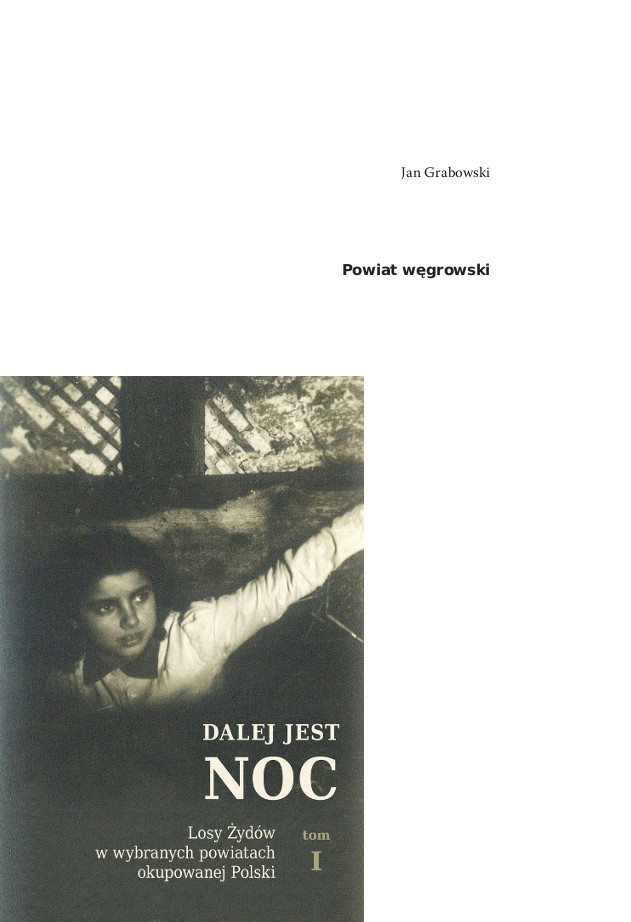
Night Without End Fate of Jews in Selected Counties of Occupied Poland is a two-volume study devoted to the fate of the Jews across nine counties in occupied-Poland, the result of many years of research conducted by a team of scholars. The individual studies address, for instance, the fate of Jews, the German policy of terror, Polish society’s actions and reactions, and the attitudes of the underground organizations to the Holocaust, which took place in plain sight. Our book has garnered great interest among readers. and has also become a starting point for numerous discussions and an object of, mostly positive, reviews. The Polish state in the form of the Institute of National Remembrance (Instytut Pamięci Narodowej, IPN) has recently joined the discussion by publishing several reviews written by the institute’s employees. The longest of such reviews, and the only one I will refer to, is that penned by Dr. Tomasz Domański, an employee of the Kielce branch of the IPN. He published a lengthy review, exceeding seventy pages, devoted to our book, which I co-edited and co-authored. Domański’s report is predominantly a testament to his courage, for although he is not particularly distinguished in research on Holocaust history, he eagerly renders harsh judgments against scholars who have devoted many years to this subject.
Importantly, this review repeatedly refers to unpublished manuscripts authored by other IPN employees. For example, Domański refers to a manuscript by Tomasz Roguski (an employee of the Warsaw branch of the IPN) devoted to Węgrów county, the manuscripts written by Katarzyna Pawlak-Weiss (the deputy director of the Wrocław IPN branch) and Krzysztof Kupeć (also from the Wrocław branch) about Złoczów county, the manuscript written by Dawid Golik (from the Cracow branch) about Nowy Targ county, and finally, the manuscript by Sebastian Piątkowski (a Radom branch employee) about Łuków county. Consequently, this review is not so much a scholarly report than it is the product of the collective effort of clerks, delegated by their superiors to perform this special task. Despite its intention, this review does not constitute an intellectual polemic; it is, rather, an attempt to damage the reputation of independent scholars ...
read the entire response![]() | see in PDF
| see in PDF![]()
Dagmara Swałtek-Niewińska
Institute of Philosophy and Sociology of the Polish Academy of Sciences
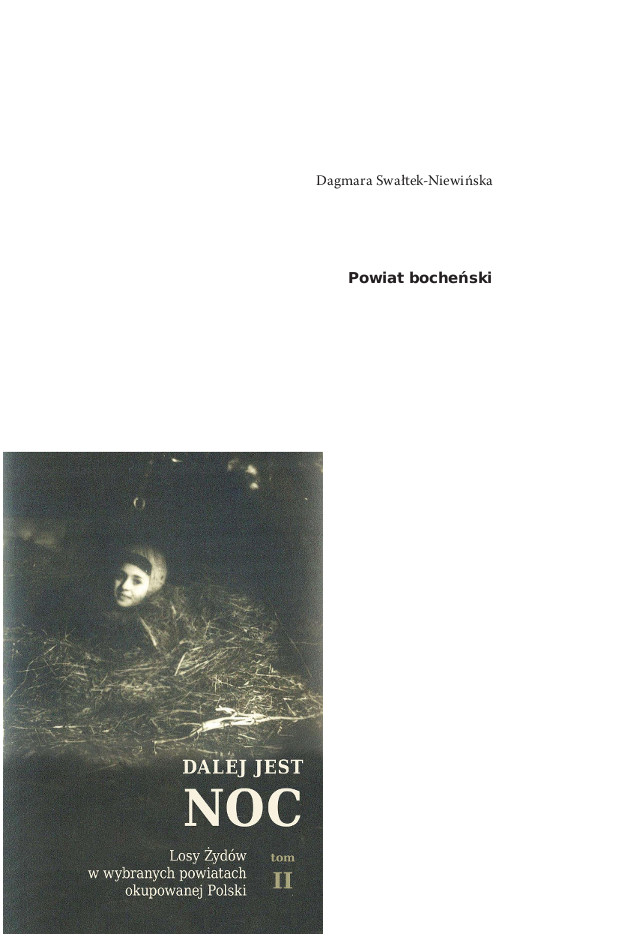
At first glance, Tomasz Domański’s extensive review of our book Night Without End. Fate of Jews in Selected Counties of Occupied Poland seems to be written by an expert. In fact, however, it contributes surprisingly little. A more thorough reading of the review proves that Domański read our book carelessly and selectively. Let me address the most serious accusations he formulates against my chapter devoted to Bochnia county.
His first and primary accusation concerns the selection of the research territory. Domański disproves of the fact that some of us chose pre-war counties, while others focused on wartime counties. Moreover, he writes about that decision in a sensational vein, as if he made a significant discovery and proved a manipulation. During the occupation, pre-war Bochnia county, which I studied, belonged to Kreishauptmannschaft Krakau-Land. I selected that particular research territory for specific reasons. The Kreishauptmannschaft bordered the city of Krakow, the capital of the General Government. Localities such as Wieliczka situated several kilometers from Cracow, were characterized by different social relations than the terrains more distant from the city, which made up pre-war Bochnia county. After the resettlement of Jews from Cracow, which was conducted from the summer of 1940 to the spring of 1941, most Jews living in localities near Krakow were refugees from the General Government’s capital. Their survival strategies were to a large extent connected with Krakow, as a big city provided different rescue opportunities. Consequently, researching the entire Kreis would have largely come down to analyzing the fate of the Jews in Krakow. I wished to avoid that, since our project’s intention was to carry out research on smaller towns and villages. . Due to those factors, which influenced survival strategies in the former Bochnia county and pre-war Krakow county, I decided to discuss only the former. Another argument was the certain administrative separateness of that terrain. The territory of the pre-war county was administered by the plenipotentiary (Landkommissar) seated in Bochnia, who was subordinate to the county governor (Kreishauptmmann) and was partly in charge of Jewish affairs on his behalf ...
Dariusz Libionka
Polish Center for Holocaust Research of the Institute of Philosophy and Sociology of the Polish Academy of Sciences
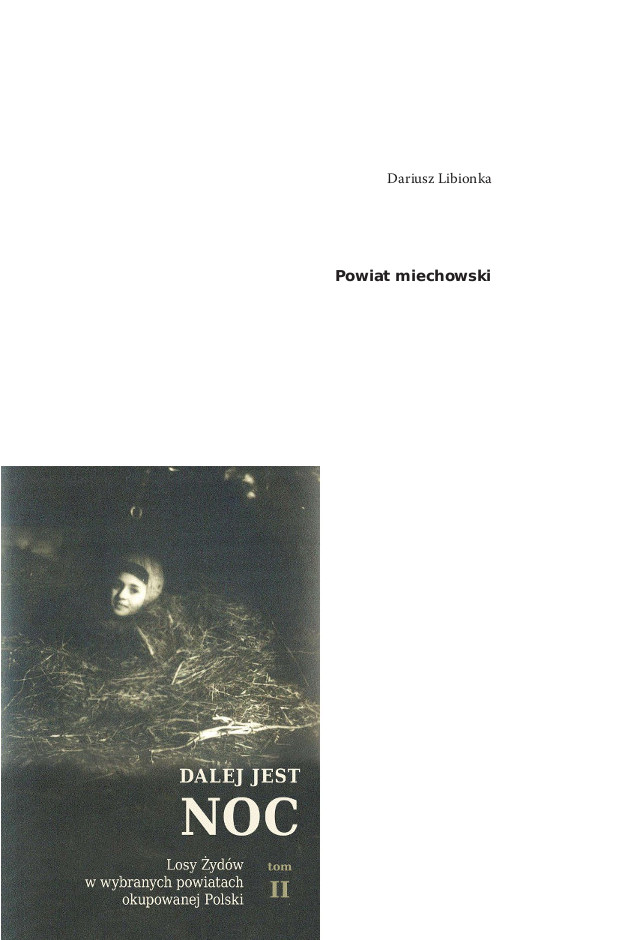
Before I move on to the charges formulated by Dr. Tomasz Domański in his review, I need to briefly characterize what I wrote in my text published in Dalej jest noc. (Night without End). My text is 196 pages long. It deals with the extermination of the Jews in Miechów county (Kreis Miechów), part of the Cracow District and one of the largest counties in the General Government. The sheer scale shows that the research required substantial effort. The introduction contains a discussion of the literature, a characterization of Jewish settlements in the area, including Polish-Jewish relations, as well as the general situation in the inter-war period. The part that deals with the occupation beings by characterizing the local German administration and police forces, followed by a description of the situation of the Jews, with particular emphasis on the occupier’s policy toward the Jewish population, its size in the individual centers, the deportations within and outside of the county, the attempts to create ghettos, and of forced labor. A separate section concerns the course of the so-called liquidation operations (the early deportations, concentrations, and further deportation stages to the Bełżec death camp). I discuss in detail the extermination mechanism, the German perpetrators, both at the local and district levels (operations against Miechów Jews were a part of ‘Operation Reinhardt’, the code name of the extermination of Jews in the Generalgouvernement).
I tried to accurately describe in detail the course of the ‘liquidation operations’ in each of the several largest places. In this context, I also write about operations undertaken by formations composed of Poles that were harnessed to the mechanism of extermination: the ‘navy blue police’ that was subordinated to the gendarmerie, and the youth of the Construction Service (Baudienst). Their involvement, to be clear, was substantial due the local circumstances. I tried to estimate the number of Jews deported to death camps, those murdered on the spot, deported to labor camps in the Cracow District and outside it, as well as assess the number of people who tried to escape both in Kreis Miechów and in other areas of the Generalgouvernement as well as in Regierungsbezirk Katowice. In each case, I identify the difficulties related to the research and description of the issues, particularly with respect to estimates and calculations. ...
Anna Zapalec
Institute of History and Archival Studies, Pedagogical University of Cracow
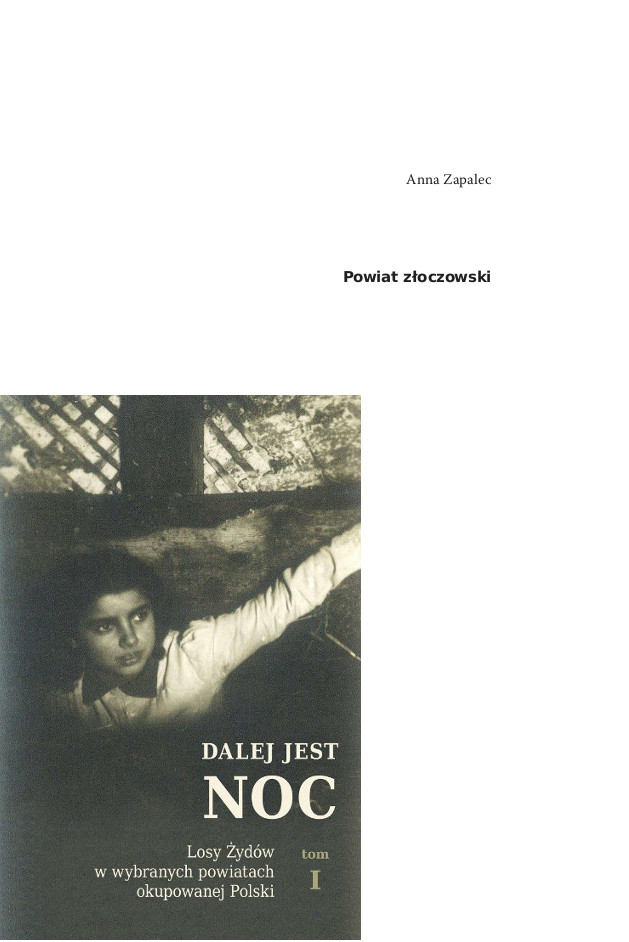
In Night Without End I prepared the chapter about the fate of Jews in Złoczów county. Our intention was for the research framework to include one of the eastern pre-war Polish counties which were located in District Galicia (Distrikt Galizien) during the German occupation, and had been part of the General Government since August 1941. We were looking for a multicultural area, diverse in social, economic, and religious terms, which had been fraught with various ethnic problems even before the war. The concept developed by our research team involved analyzing those relations even before the outbreak of World War II, as the interwar perspective seemed very important in the context of the events which happened later, during the war and the occupation. It was also our objective to verify how the German occupation system functioned in several selected areas. The reviewer should realize that making such decisions is the autonomous prerogative of every scholar and research team.
Złoczów county, in its pre-war borders, fulfilled the preliminary criteria for the selection of research territory. Aside from Poles and Ukrainians, who were the two largest ethnic groups, it was also inhabited by Jews, who lived in average-sized communities in towns or much smaller ones in the countryside. In the Tarnopol Province, where it was located, it was one of the counties with the largest total population, including Jewish population. It had a provincial character and was an ethnic mosaic with a majority rural population (with a very large percentage of Ukrainians). Though Złoczów county had no major city, there were several smaller towns. During the German occupation an open ghetto was established there and became its distinctive feature. This was the basic premise for my choice of this county — the interesting local micro-world as a kind of a research sample, a microstudy of social relations during the occupation ...
Alina Skibińska
Polish Center for Holocaust Research of the Institute of Philosophy and Sociology of the Polish Academy of Sciences
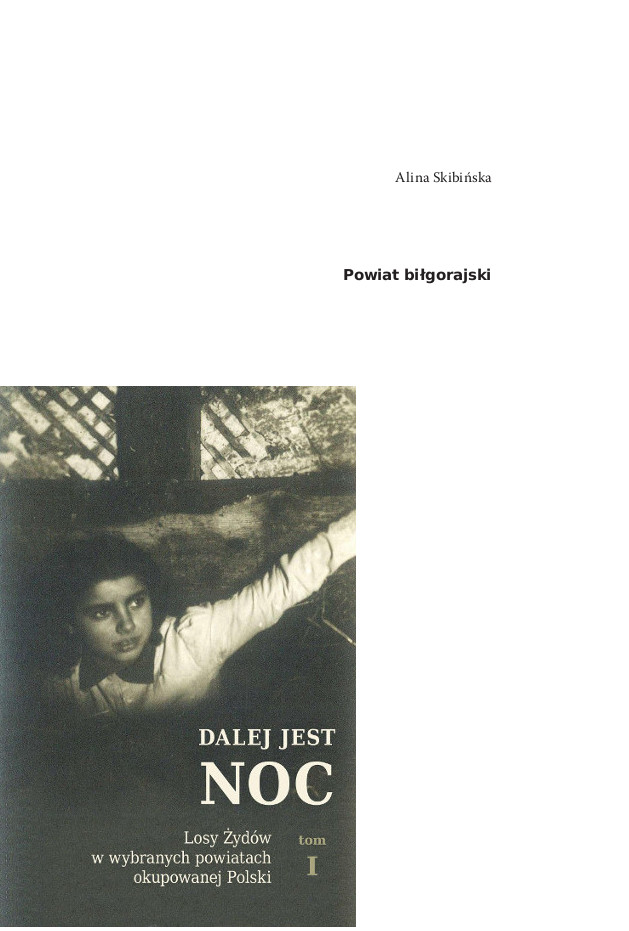
In my response to Dr. Tomasz Domański’s review, I will address several of his critiques of my work as well as some of his general remarks, which, I suppose, are addressed to all authors of our collective publication entitled Night Without End. Fate of Jews in Selected Counties of Occupied Poland.
The reviewer, referring to fragments of the individual studies devoted to deportation campaigns and the length of those chapters, writes: “I do not deny the authors their right to independently choose the narration manner, but it seems that it is a duty of a historian to attach cardinal importance to presenting his detailed enunciations in such a way so as to lessen the distortion of the perception of the comprehensive picture of the Holocaust instead of deepening it” (Domański 22). Domański accuses us (though it remains unclear whether he is addressing all or only some of us) of emphasizing different aspects and producing texts varied in length. Each author who partook in this project, which aimed to examine the fate of the Jews during and after the ‘deportation campaigns’ (also called ‘liquidation campaigns’ by the Germans), was free to construct the text as they pleased and decide how much space they would devote to particular issues, so as to recreate the reality of the occupation period as faithfully as possible and illustrate the specificity of the given region. In some of the areas studied, the events of the liquidations were long-lasting and complex (for instance, in Miechów county), while in other areas only a single Aktion was conducted and in one day at that (in Bielsk-Podlaski county, for example). These distinctions determined the length of the text. In my 185-page text devoted to Biłgoraj Kreishauptmannschaft, the deportation campaigns are described in chapter “1942 — Extermination,” which is forty-one pages long and is further divided into three subsections: “The Course of ‘Liquidation Operations,” “Geography of the Holocaust,” and “Number of Victims.” The texts written by the other authors vary in length, as do their chapters devoted to the campaigns — so what? The reviewer simply formulates a superficial objection and suggests that in this way, the authors “deepen the distortion of the perception of the comprehensive image of the Holocaust.” I must stress that presenting a comprehensive picture of the Holocaust was certainly not our objective. Moreover, the reviewer considers it to be a mistake that we devoted less attention to the period before 1942, as “this treatment can give a less knowledgeable reader a false impression of the Holocaust’s course.” It is obvious, however, that a book devoted predominantly to the period of 1942–1944/45 will focus on describing those very years. ...
Tomasz Frydel
University of Toronto
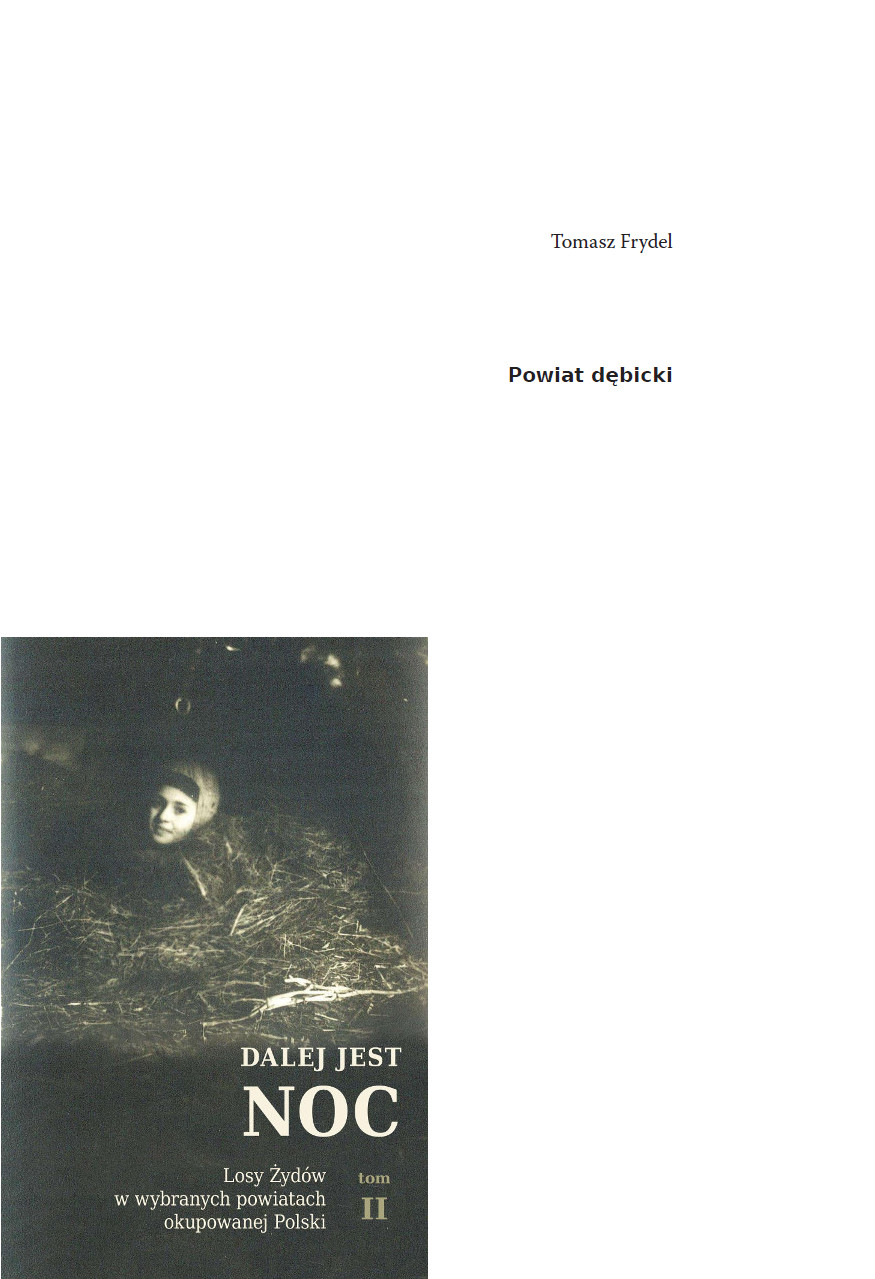
“Correcting the Picture” by Dr. Tomasz Domański, a historian employed with the state-funded Kielce branch of the Institute of National Remembrance (IPN), stands as something of a novelty in the annals of academic reviews. Per its subtitle, Domański's extraordinary 72-page tractatus is a “reflection” on the uses (or abuses) of sources employed by the authors of a two-volume study entitled Night Without End: The Fate of Jews in Selected Counties of Occupied Poland (Barbara Engelking and Jan Grabowski, eds., Dalej jest noc. Losy Żydów w wybranych powiatach okupowanej Polski (Warsaw: Stowarzyszenie Centrum Badań nad Zagładą Żydów, 2018). Allegations of the most serious kind are flung across the pages of the review against the book and its nine contributors: among them, deliberate manipulation of archival sources to fit a preconceived thesis, uncritical reproduction of Nazi propaganda in the historical reconstruction, and failure to sufficiently integrate the historical context.
It is impossible here to address all of the general objections scattered throughout the review. Suffice it to say that the major objections do not stand up to scrutiny in relation to my chapter on Dębica county, which encompassed three prewar Polish counties (Dębica, Mielec and Tarnobrzeg) and carried the official name of Kreis Debica, noted at the very outset(Tomasz Frydel, “Powiat dębicki” [Dębica county], in Dalej jest noc, Vol. 2, 361-521). As readers are more likely to consult the review than the 160-page chapter itself, I will try to dispel some of the confusion. I will limit myself to what I regard as the biggest criticism directed specifically at that chapter and touch on some of the broader objections as they come up. ...
Karolina Panz
Institute of Slavic Studies of the Polish Academy of Sciences
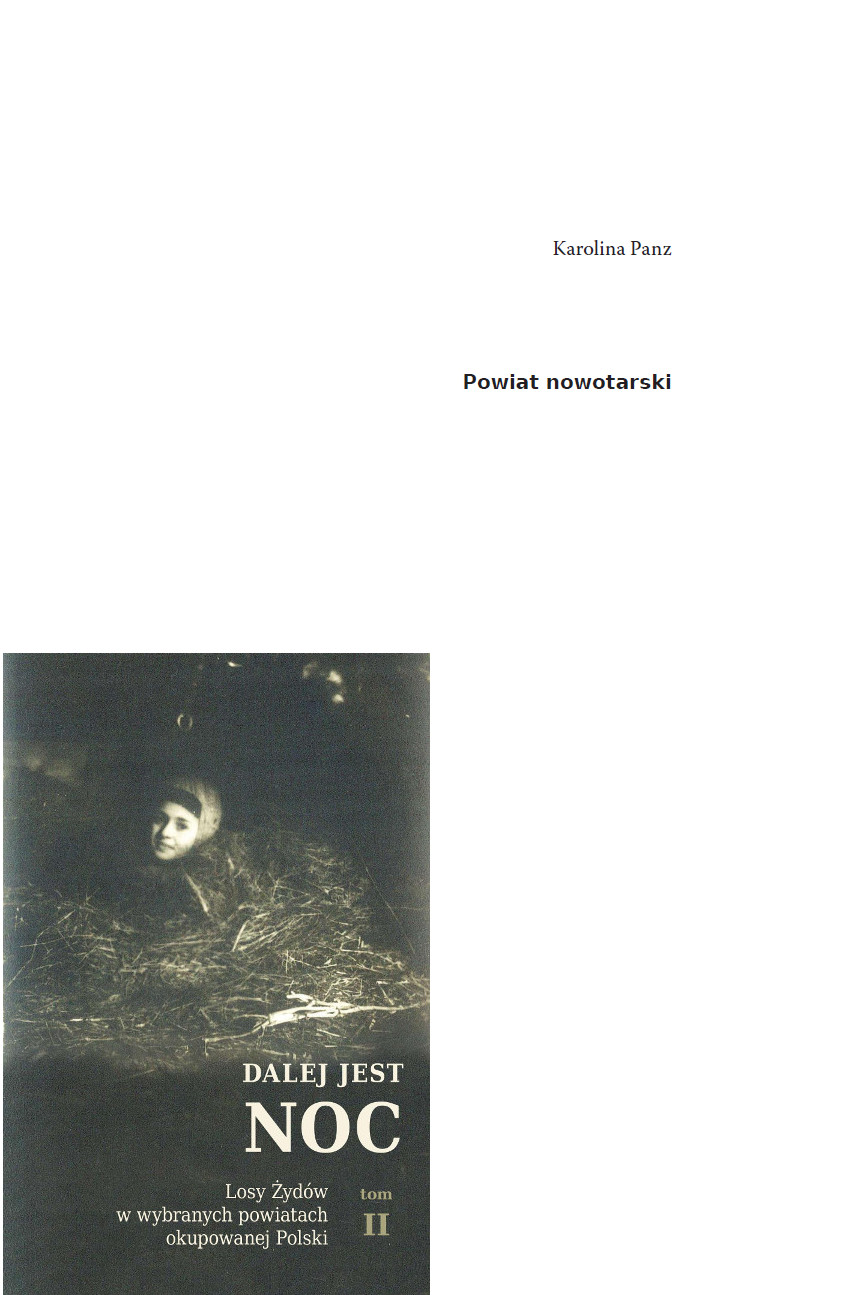
As the author of the chapter “Nowy Targ County” published in Night Without End, I have long pondered whether to reply to Tomasz Domański’s review, because I have considerable doubts if the author of the review published by the Institute of National Remembrance (Instytut Pamięci Narodowej, IPN) read my text. It is the first time I have come across a situation where the reviewer employs opinions of another reviewer while voicing his reservations about a text and never reaches beyond them.
Domański, citing the manuscript of a then unpublished review by Dawid Golik (an employee of the Cracow Branch Office of the IPN; the review was published in February in Zeszyty Historyczne WiN 47, the periodical in which I plan to reply to Golik’s review), attacked me for applying “the method of putting forward hard claims a priori, literally without presenting any archival findings” (31), and for “drawing conclusions based on two testimonies” (30). Truly, I have no idea what my study could be a result of if not archival research — it has 647 footnotes, where I cite materials from Polish, German, Israeli, and American archives. The following remark written by Domański concerns my conclusion: “The sources that were available to me demonstrate that in the autumn of 1942 on the territory of Kreis Neumarkt the key role in the methodical hunt for victims in the mountains and forests was that of organized 12-men peasant guards and informal gangs that pretended to be peasant guards, made up of young men, who knew each other quite well” (Panz, vol. 2, 290). I never thought that I would be forced to explain to a reviewer that the phrase “sources available to me” is not identical with the materials that I used as sources of quotations in summarizing the several pages long description of the fate of Podhale Jews hiding in Nowy Targ county in the early days following Operation Reinhardt. Domański writes, referring to me: “She seems to forget that the forests were also combed by members of uniformed German formations: the blue police and the Forstschutzkommando (Forest Guard)” (31) ...
Barbara Engelking
Polish Center for Holocaust Research of the Institute of Philosophy and Sociology of the Polish Academy of Sciences
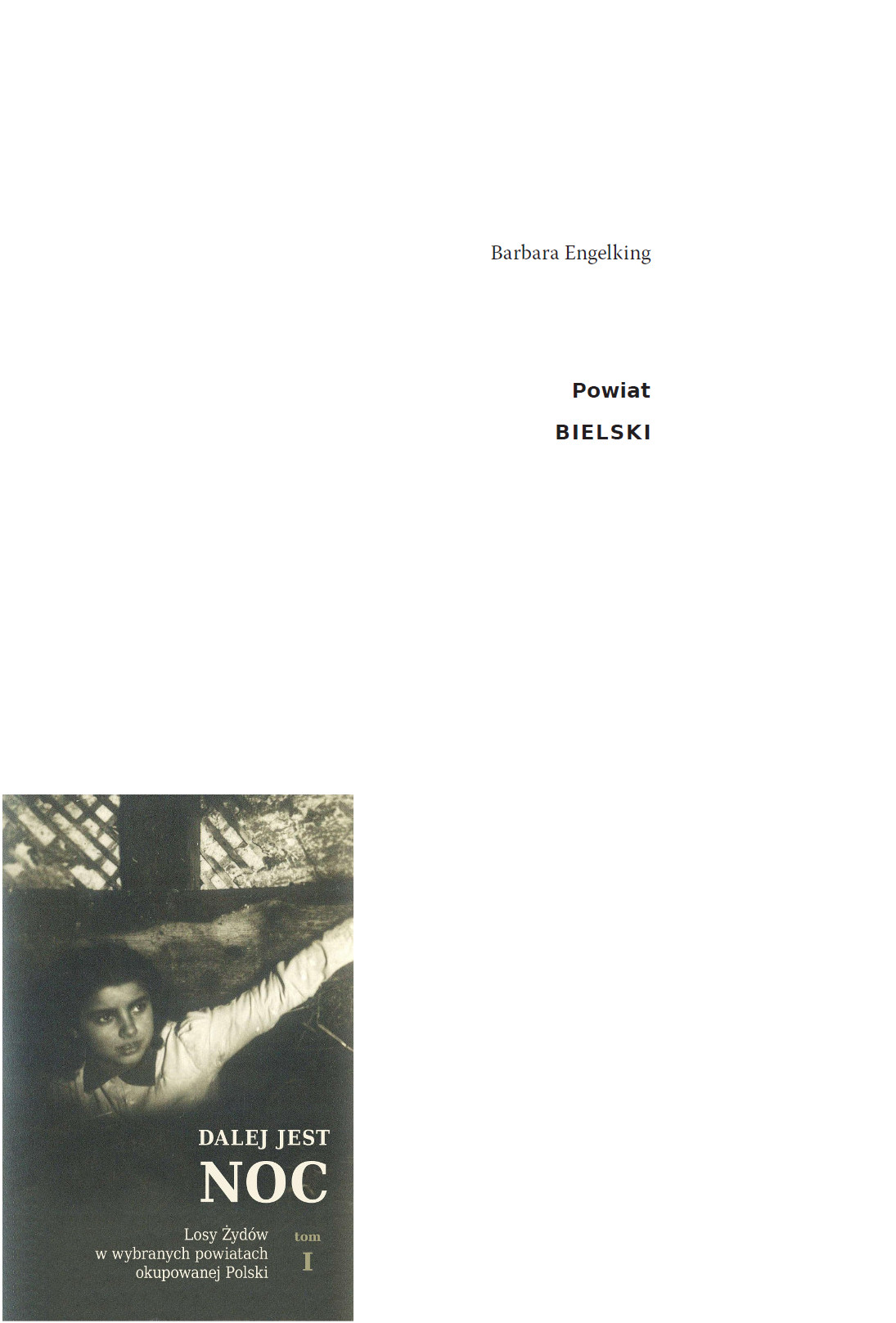
In their responses to Dr. Tomasz Domański’s review, my colleagues and the co-authors of Night without end described in detail his methods of manipulation, his insinuations, and incompetence. Therefore, I will not address his text, which is a rather elaborate calumny; instead, I will look at Domański’s review from a different perspective. I have tried to find some themes in it that could be a starting point for historical discussion. In principle, that is – in my opinion - a reviewer’s task: discuss the book, indicate its strengths and weaknesses, and suggest points for further discussion. With substantial considerable? effort, I found two points that could be the basis for substantive discussion in the seventy-two pages of his review.
The first one concerns the issue of help and conceptualizing the difference between help and rescue. Although the thematic scope of both concepts is similar, in the context of World War II, it concerns, in my opinion, two different attitudes toward Jews. To put it simply, I would say that ‘rescue’ is a broader concept, as not every act of help was automatically an act of rescue.
“A moral problem knocks at the door”, wrote Szymon Datner in 1968 to describe the situation wherein a Jew in need of shelter asked a Pole for help (idem, Las sprawiedliwych. Karta z dziejów ratownictwa Żydów w okupowanej Polsce, Warsaw: 1968, p. 27). Responses to this pressing moral problem varied enormously, and they cannot be viewed as a catalog of Polish attitudes to the Holocaust: from different kinds of help or rescue, through indifference to denunciation or murder ...
.
Jean Charles Szurek
Centre National de la Recherche Scientifique
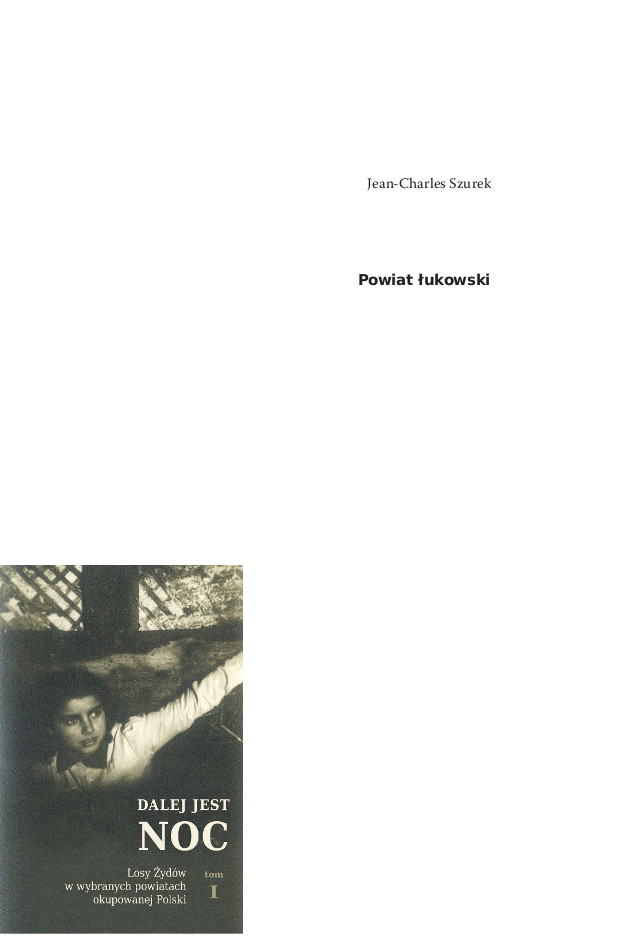
For a long time, I have been hesitant to accept the idea that the attack of Dr. Domański needs to be replied at all -- mostly owing to the condescending and contemptuous tone he adopted towards the authors of Night Without End. For an article of supposed scientific ambitions, his review is laden with derogatory statements. Below please find several blatant examples of such attacks that were deliberately aimed at all of the authors:
Sources [...] speak about it - if one uses them accordingly, and not selectively,” “without scholarly diligence,” “ignorance of the scholarly apparatus,” “source manipulations,” “Is the picture shown one that aimed at scholarly objectivity? No, it is not.
I questioned the value of responding to a criticism that fails to rise to the basic tenets of scholarly discourse, and which, therefore, has no real place in academia. I still question it because I clearly recognize the role in which this, to put it mildly, unusual, 72-page-long article that opens the first issue of “Polish-Jewish Studies” has been cast. Although printed in a scholarly journal published by the Institute of National Remembrance, this is by no means a customary book review aimed at a critical examination of a scholarly work. This is an effort to discredit the authors of the book, based entirely on the fact that the conclusions at which their studies arrived are at odds with those espoused by the current leadership of the Institute of National Remembrance (IPN) and one that is also Dr. Domanski’s employer. There is a thinly-veiled political agenda behind the historical reasoning presented in his review and, for this reason, it needs to be called out for what it is, first and foremost, a political narrative ...
read the entire response![]() | see in PDF
| see in PDF![]()



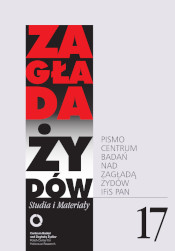

.jpg)
.jpg)


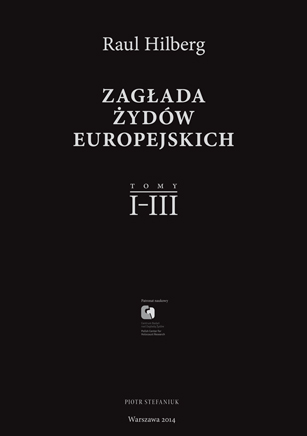
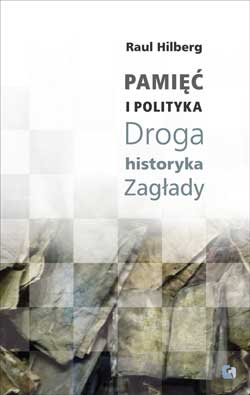
.jpg)
.jpg)
.jpg)
.jpg)
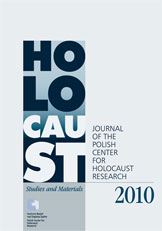

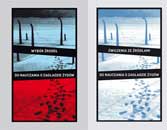
.jpg)
.jpg)
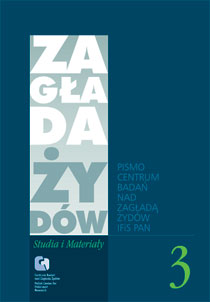
.jpg)
